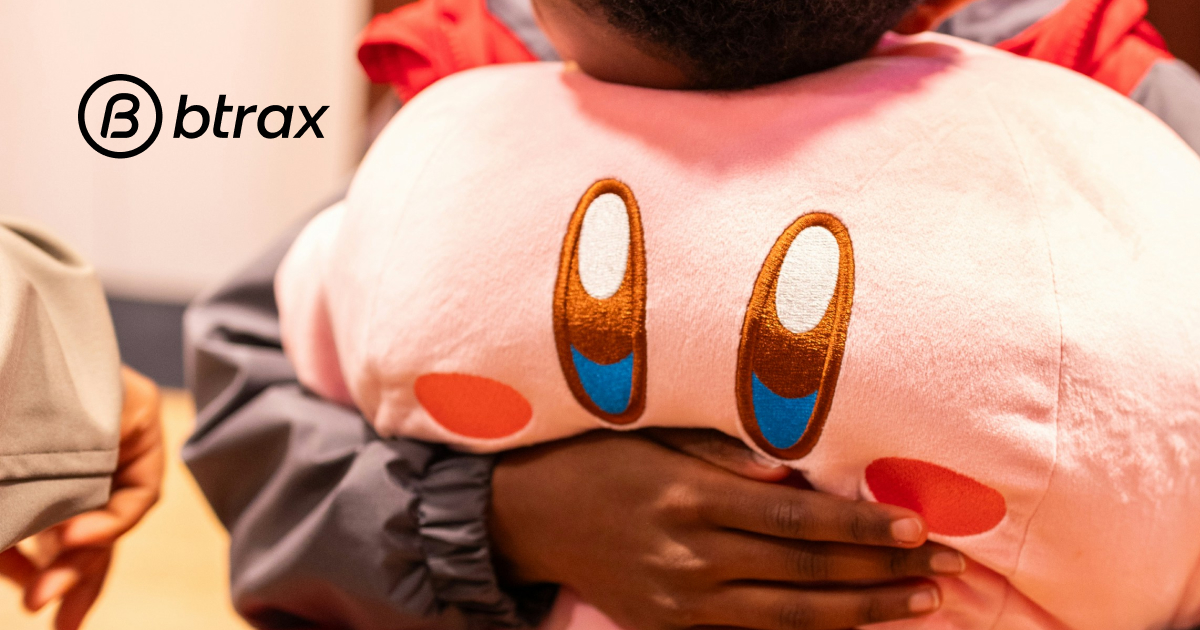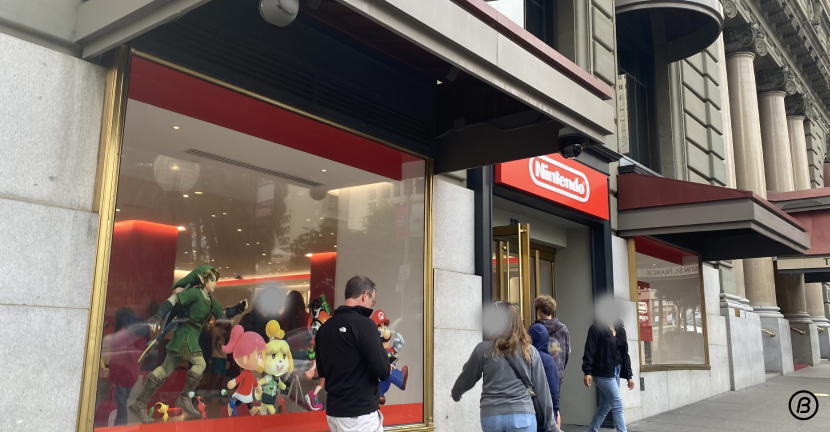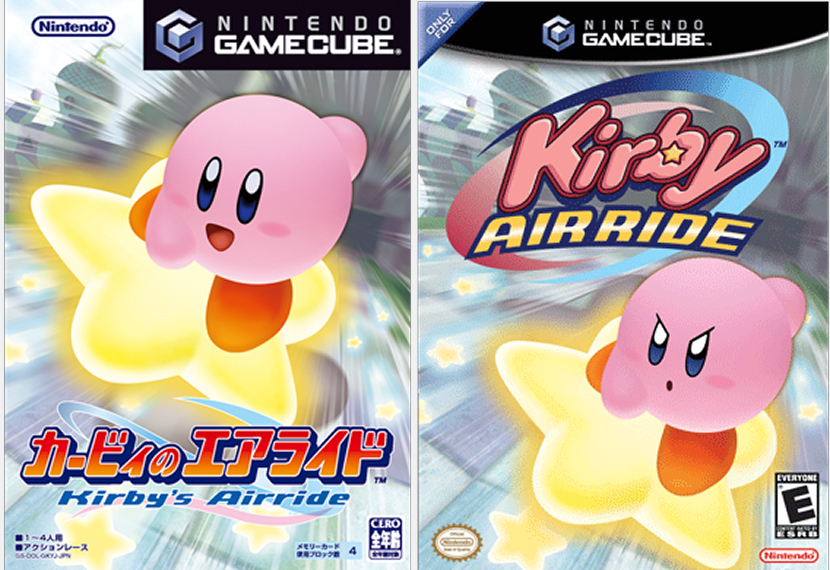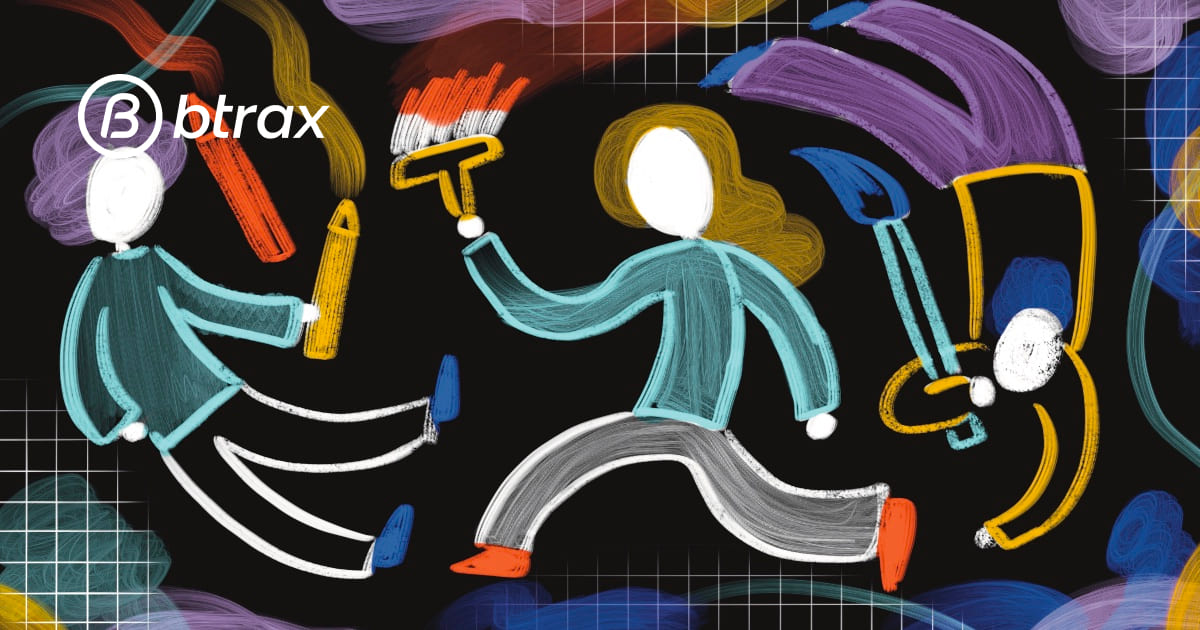
Btrax Design Company > Freshtrax > How Nintendo Ma...
How Nintendo Masters Localization: What Your Brand Can Learn
Originally published in Japanese here, translated by John Hayato Branderhorst
When Nintendo opened its second U.S. flagship store in San Francisco this past May, fans waited in line for 40 minutes just to get inside.

A month later, the Switch 2 shattered first-week sales records for any gaming console in American history.
These wins didn’t happen by accident. Behind Nintendo’s global success lies something most companies struggle with: brilliant localization that goes way beyond translation.
Let’s dive into how Nintendo tailors the same beloved characters for completely different markets, and what that teaches us about connecting with audiences worldwide.
The Tale of Two Kirbys
In Japan, Kirby is pure kawaii, that round, pink puffball with sparkling eyes who shows up on everything from lunch boxes to plushies. His gentle smile screams “hug me,” making him perfect for brands targeting families and young women.
But flip to the American market, and you’ll find a very different Kirby staring back at you.

(Source: HAL Laboratory, Inc. https://www.hallab.co.jp/works/detail/000728/ )
Take Kirby Air Ride for GameCube in 2003. The Japanese cover shows our familiar friendly Kirby, eyes bright and welcoming. The North American version? Kirby’s got a furrowed brow, narrowed eyes, and zero trace of that trademark smile. He looks ready for battle.
Nintendo’s research showed American gamers respond better to characters who look strong and action-ready. So they gave Kirby an attitude adjustment for the U.S. market, same character, completely different vibe.
Here’s what’s fascinating: the upcoming Kirby Air Riders, the first new game in the series in almost 20 years, will use the same soft, friendly Kirby design worldwide. Why the change?
First, “cute” sells globally now. Pokémon, Animal Crossing, and Splatoon proved Western audiences love adorable characters too. Second, social media changed everything. When fans around the world see the same images instantly, maintaining consistent branding matters more than regional tweaks.
Nintendo learned that localization isn’t set-it-and-forget-it. It’s about constantly adapting as global tastes evolve.
Donkey Kong’s Different Approaches
While Kirby was getting a personality makeover, Nintendo took a completely different approach with Donkey Kong, especially with this summer’s release of Donkey Kong Bananza, the first new game in the series in 26 years.
In Japan, Nintendo created nine different TV spots, each carefully explaining the game’s mechanics and world. Makes sense, Donkey Kong needed reintroduction to Japanese audiences, especially with the new Universal Studios Japan area that opened last year.
But in America? Donkey Kong was already a household name. When Donkey Kong: Tropical Freeze launched in 2014, it sold 130,000 copies in just eight days in the U.S. versus 70,000 copies in a full month in Japan.
So Nintendo went full throttle for the American Bananza campaign. The main trailer, “Unleash Your Inner Kong”, is pure hype: crowds chanting “D! K!” stadium-style, explosive action sequences, and barely any explanation of what you actually do in the game.
The strategy worked. Before launch, the Donkey Kong Bananza Direct livestream hit 4.1 million views, even outperforming the Mario Kart World Direct for Switch 2. After release? IGN gave it a perfect 10/10.
Nintendo understood that education works in Japan, but emotion sells in America.
When Localization Goes Wrong: The Tingle Problem
Of course, not every character translates well across cultures. Enter Tingle from The Legend of Zelda, a 35-year-old unemployed guy who dreams of becoming a fairy.
In Japan, Tingle is quirky but lovable enough to get his own spin-off games. In North America, he’s so despised that “Hate Tingle” became a thing. IGN literally ran a “Die, Tingle, Die!” campaign, and fan backlash was so intense that Nintendo kept him out of Twilight Princess entirely.
The problem wasn’t just his weird look, it was tonal mismatch. American audiences see Zelda as a serious fantasy adventure. A middle-aged fairy wannabe doesn’t just break immersion; it shatters it completely.
What reads as harmless comedy in Japan came across as creepy and uncomfortable to U.S. players. This disconnect between creator intent and audience reception is localization’s biggest pitfall.
What This Means for Global Brands
Nintendo’s hits and misses reveal something crucial: localization isn’t about changing what you say, it’s about changing how you say it.
The company succeeds because they understand that “funny,” “cute,” and “appealing” mean completely different things in different cultures. They’re willing to reimagine their presentation without losing their core message.
Take Kirby’s evolution. Whether he’s smiling sweetly or glaring intensely, he’s still the same lovable character underneath. The essence stays constant while the expression adapts.
Smart localization requires cultural sensitivity, market research, and perhaps most importantly, the humility to admit when something isn’t working. Tingle taught Nintendo that some cultural gaps are too wide to bridge, and that’s okay.
The Bigger Picture
As social media connects global audiences and “kawaii culture” spreads worldwide, the rules keep changing. What required heavy localization 20 years ago might work universally today. What works universally today might need serious adaptation tomorrow.
Nintendo’s genius lies not in any single strategy, but in their willingness to keep evolving their approach. They test, they learn, they adapt, and they never assume what worked before will work again.
For any brand looking to go global, that’s the real lesson: stay flexible, stay curious, and never stop listening to your audience. The moment you think you’ve got localization figured out is the moment your next Tingle is waiting to humble you.
Ready to Master Localization?
Whether you’re planning international expansion or refining your current global strategy, getting localization right can make or break your success. The difference between Kirby’s evolution and Tingle’s troubles often comes down to having the right cultural insights and strategic approach.
If you’re looking to build authentic connections with international audiences while staying true to your brand’s core identity, let’s talk about how to make it happen.
How btrax Can Help
- Localization Strategy: Craft market-specific approaches that retain your brand’s unique identity while resonating with local culture and values.
- Brand Strengthening: Build strategies to boost brand recognition and competitiveness in global markets.
- Local Events & Promotions: Create direct consumer touchpoints through in-market experiences that bring your brand to life.
At btrax, our global bilingual team understands both Japanese and American markets, their cultures, consumer mindsets, and how to bridge them. If you’re considering entering the Japanese market or refining your localization strategy, we’d love to talk.






